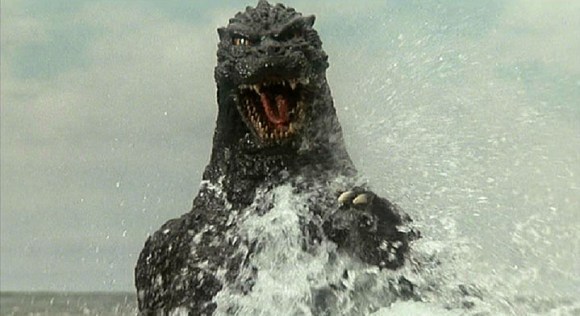
Well, sort of. OK, so that title is a bit misleading. But an article on Yomiuri Online the other day confirmed that researchers have discovered a new underwater geological formation, the largest of its kind in the world, south of the Japanese mainland. Furthermore, they have named it after everyone’s favorite King of the Monsters! This “new Godzilla” could even shed light on some secrets about the inside of the earth. Keep reading to find out more about this amazing scientific discovery.
The Okinotori-shima (literally “remote bird islands”) are often referred to as the southernmost islands of Japan. Along with the Bonin Islands, the Volcano Islands (which include Iwo Jima), and two other isolated islands, they are governed by the Ogasawara Village municipality, which is itself located in the Ogasawara Subprefecture of Tokyo Metropolis. In the southeast corner of Okinotori-shima, the Japan Coast Guard and some ocean research and development teams have recently discovered the world’s largest exposed dome-shaped rock formed from mantle under the earth’s crust (middle school science class review: mantle is the layer between the earth’s crust and its inner core). Think of the rock as a kind of “peeping hole” into the inside of the earth.
▼ Location of the Okinotori-shima Islands on a map
▼ The islets of Okinotori-shima are technically an atoll.
The exposed mass of rock is located approximately 700 kilometers beneath the ocean’s surface. It is 125 kilometers in length, 55 kilometers in width, and approximately 4 kilometers in height (in this case, height = the difference between the deepest part and the tallest part of the rock). In other words, it’s three times the area of the Tokyo Metropolitan area. But the coolest part of the discovery? Due to the appearance of a massive monster on the ocean floor, researchers have dubbed it the “Godzilla Megamullion“! Apparently this is not a nickname but its official title. The name has already been used in scientific papers and the 14 protrusions on the rock confirmed up until now are referred to as “Godzilla’s head,” “Godzilla’s neck,” “Godzilla’s tail,” etc. Don’t you just love a scientist with a sense of humor?
To enlighten all the non-geology majors like me out there, the term “megamullion” is also known as an oceanic core complex (OCC). It is described as “a seabed geological feature that forms a long ridge perpendicular to a mid-ocean ridge. It contains smooth domes that are lined with transverse ridges like a corrugated roof.” Hope that helps a little…
The Godzilla Megamullion was formed an estimated 1 million to 5 million years ago when a portion of the earth’s crust on the ocean floor was forced open by tectonic activity and mantle rock was pushed into exposure above the surface. Studies have also confirmed vestiges of this dislocation process within the rock.
Mantle cannot usually be seen by direct observation, so this discovery will prove useful to scientists studying its composition. It is additionally important as an underwater resource because mantle contains deposits of minerals from which metals or precious gems may be made. Typically, lava at the bottom of the ocean on the earth’s crust cools, then hardens into basalt. But because Godzilla Megamullion was formed by a dislodged section of the earth’s mantle, it is composed of rocks common to the earth’s upper mantle, such as peridotite.
▼ Peridotite
If you click the Yomiuri Online link here, you can view a graphic illustrating the formation of the Godzilla Megamullion.
If other exposed mantle rocks happen to be discovered in the same area, I would personally love it if researchers kept up the trend of naming them after other characters from the Godzilla franchise. How would you like to see a Mothra, Ghidorah, or even King Kong Megamullion?
Sources: Yomiuri Online, Wikipedia (1, 2)
Images: Araneda, Wikipedia (1, 2)

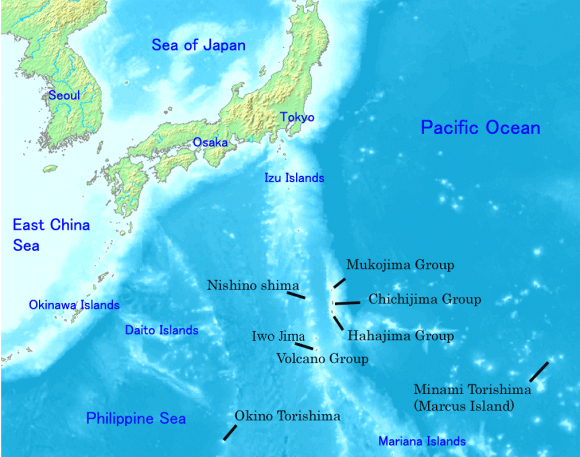
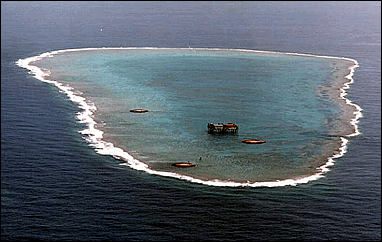
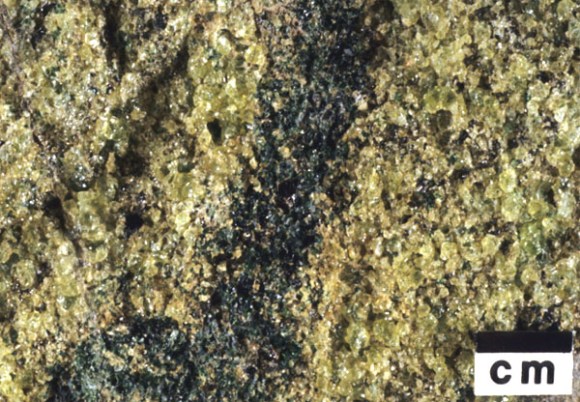
 Looking for a unique job environment? This could be as unique (and isolated) as it gets in Japan!
Looking for a unique job environment? This could be as unique (and isolated) as it gets in Japan! REVIEW: Samsung’s new fitness gadget makes a sleek smartwatch
REVIEW: Samsung’s new fitness gadget makes a sleek smartwatch Top 10 places to see a spectacular sunset in Japan
Top 10 places to see a spectacular sunset in Japan We bought a piece of a real, launched rocket for only 500 yen, and you can too! 【Pics】
We bought a piece of a real, launched rocket for only 500 yen, and you can too! 【Pics】 Fiery balls of lava erupting from Nishinoshima eruption caught on video
Fiery balls of lava erupting from Nishinoshima eruption caught on video Japanese ramen restaurants under pressure from new yen banknotes
Japanese ramen restaurants under pressure from new yen banknotes New private rooms on Tokaido Shinkansen change the way we travel from Tokyo to Kyoto
New private rooms on Tokaido Shinkansen change the way we travel from Tokyo to Kyoto McDonald’s new Happy Meals offer up cute and practical Sanrio lifestyle goods
McDonald’s new Happy Meals offer up cute and practical Sanrio lifestyle goods French Fries Bread in Tokyo’s Shibuya becomes a hit on social media
French Fries Bread in Tokyo’s Shibuya becomes a hit on social media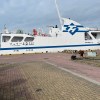 A trip to hell on Japan’s ‘vomit ship’: Is it as bad as everyone says it is?
A trip to hell on Japan’s ‘vomit ship’: Is it as bad as everyone says it is? Sakura tree falls on man at Sannenzaka near Kiyomizu temple in Kyoto 【Breaking News】
Sakura tree falls on man at Sannenzaka near Kiyomizu temple in Kyoto 【Breaking News】 We tried Korea’s way-too-big King Tonkatsu Burger at Lotteria 【Taste Test】
We tried Korea’s way-too-big King Tonkatsu Burger at Lotteria 【Taste Test】 Secret Kitchen bento serves Japanese flowers, birds, wind and moon in a box, but is it worth it?
Secret Kitchen bento serves Japanese flowers, birds, wind and moon in a box, but is it worth it?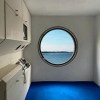 Japanese company starts project to restore Nakagin Capsules to capsule hotel
Japanese company starts project to restore Nakagin Capsules to capsule hotel Studio Ghibli releases new action figures featuring Nausicaä of the Valley of the Wind characters
Studio Ghibli releases new action figures featuring Nausicaä of the Valley of the Wind characters All-you-can-drink Starbucks and amazing views part of Tokyo’s new 170 meter-high sky lounge
All-you-can-drink Starbucks and amazing views part of Tokyo’s new 170 meter-high sky lounge More foreign tourists than ever before in history visited Japan last month
More foreign tourists than ever before in history visited Japan last month Starbucks reopens at Shibuya Scramble Crossing with new look and design concept
Starbucks reopens at Shibuya Scramble Crossing with new look and design concept Studio Ghibli glasses cases let anime characters keep an eye on your spectacles
Studio Ghibli glasses cases let anime characters keep an eye on your spectacles Is the new Shinkansen Train Desk ticket worth it?
Is the new Shinkansen Train Desk ticket worth it? Beautiful Ghibli sealing wax kits let you create accessories and elegant letter decorations【Pics】
Beautiful Ghibli sealing wax kits let you create accessories and elegant letter decorations【Pics】 Studio Ghibli releases Kiki’s Delivery Service chocolate cake pouches in Japan
Studio Ghibli releases Kiki’s Delivery Service chocolate cake pouches in Japan New definition of “Japanese whiskey” goes into effect to prevent fakes from fooling overseas buyers
New definition of “Japanese whiskey” goes into effect to prevent fakes from fooling overseas buyers Our Japanese reporter visits Costco in the U.S., finds super American and very Japanese things
Our Japanese reporter visits Costco in the U.S., finds super American and very Japanese things Studio Ghibli unveils Mother’s Day gift set that captures the love in My Neighbour Totoro
Studio Ghibli unveils Mother’s Day gift set that captures the love in My Neighbour Totoro Domino’s Japan now sells…pizza ears?
Domino’s Japan now sells…pizza ears? New Japanese KitKat flavour stars Sanrio characters, including Hello Kitty
New Japanese KitKat flavour stars Sanrio characters, including Hello Kitty New Pokémon cakes let you eat your way through Pikachu and all the Eevee evolutions
New Pokémon cakes let you eat your way through Pikachu and all the Eevee evolutions Sales of Japan’s most convenient train ticket/shopping payment cards suspended indefinitely
Sales of Japan’s most convenient train ticket/shopping payment cards suspended indefinitely Sold-out Studio Ghibli desktop humidifiers are back so Totoro can help you through the dry season
Sold-out Studio Ghibli desktop humidifiers are back so Totoro can help you through the dry season Japanese government to make first change to romanization spelling rules since the 1950s
Japanese government to make first change to romanization spelling rules since the 1950s Ghibli founders Toshio Suzuki and Hayao Miyazaki contribute to Japanese whisky Totoro label design
Ghibli founders Toshio Suzuki and Hayao Miyazaki contribute to Japanese whisky Totoro label design Doraemon found buried at sea as scene from 1993 anime becomes real life【Photos】
Doraemon found buried at sea as scene from 1993 anime becomes real life【Photos】 Tokyo’s most famous Starbucks is closed
Tokyo’s most famous Starbucks is closed One Piece characters’ nationalities revealed, but fans have mixed opinions
One Piece characters’ nationalities revealed, but fans have mixed opinions We asked a Uniqlo employee what four things we should buy and their suggestions didn’t disappoint
We asked a Uniqlo employee what four things we should buy and their suggestions didn’t disappoint Princesses, fruits, and blacksmiths: Study reveals the 30 most unusual family names in Japan
Princesses, fruits, and blacksmiths: Study reveals the 30 most unusual family names in Japan Japanese convenience store FamilyMart inadvertently gives away pearl in pack of seafood snacks
Japanese convenience store FamilyMart inadvertently gives away pearl in pack of seafood snacks Massive 120-meter Godzilla statue being built as part of Japanese theme park’s newest attraction
Massive 120-meter Godzilla statue being built as part of Japanese theme park’s newest attraction Massive Godzilla figure stands more than six feet tall, costs more than $40,000
Massive Godzilla figure stands more than six feet tall, costs more than $40,000 Godzilla turns your signature into King of the Signatures with kaiju personal seals in Japan【Pics】
Godzilla turns your signature into King of the Signatures with kaiju personal seals in Japan【Pics】 A vision of the future? We can’t take our eyes off Shimizu Corporation’s “Ocean Spiral” design
A vision of the future? We can’t take our eyes off Shimizu Corporation’s “Ocean Spiral” design Mysterious fireball flies across the sky over Japan’s northern island of Hokkaido【Video】
Mysterious fireball flies across the sky over Japan’s northern island of Hokkaido【Video】 Let Godzilla do the cleaning with the new Godzilla dust mop cover
Let Godzilla do the cleaning with the new Godzilla dust mop cover Godzilla Store crushes New Year with king of the 2020 fukubukuro lucky bags
Godzilla Store crushes New Year with king of the 2020 fukubukuro lucky bags We travel to a mysterious power spot in Okinawa, where a “heart rock” floats in the sea
We travel to a mysterious power spot in Okinawa, where a “heart rock” floats in the sea REVIEW: Sony’s new tablet is thinner and lighter than the iPad Air, and Android fans will love it
REVIEW: Sony’s new tablet is thinner and lighter than the iPad Air, and Android fans will love it World’s first permanent Godzilla theme park ride opening at Tokyo-area amusement park
World’s first permanent Godzilla theme park ride opening at Tokyo-area amusement park Japan’s Godzilla movie looks darker than ever in director Hideaki Anno’s new trailer【Video】
Japan’s Godzilla movie looks darker than ever in director Hideaki Anno’s new trailer【Video】 Reveal your inner fashion samurai with traditional clothes for the modern world
Reveal your inner fashion samurai with traditional clothes for the modern world Godzilla gets official Tokyo residency papers, copies being given out free to fans
Godzilla gets official Tokyo residency papers, copies being given out free to fans Hedorah: King of the dust mops and more celebrate 50th anniversary of legendary kaiju’s debut
Hedorah: King of the dust mops and more celebrate 50th anniversary of legendary kaiju’s debut
Leave a Reply